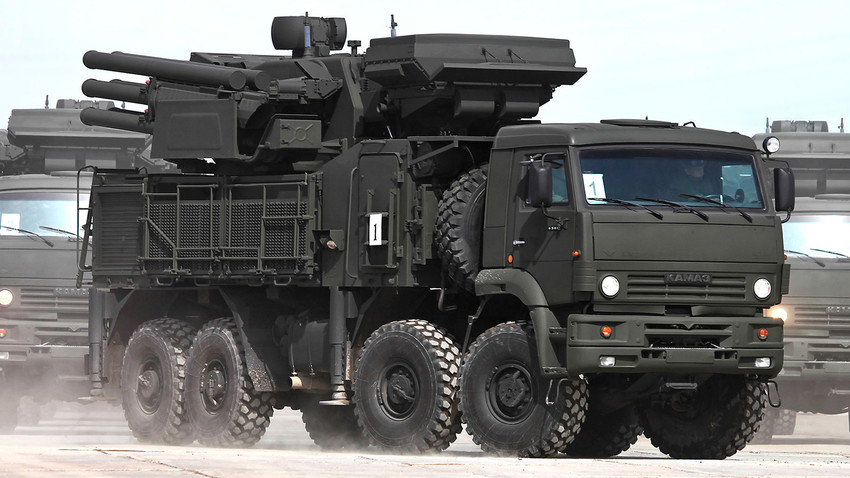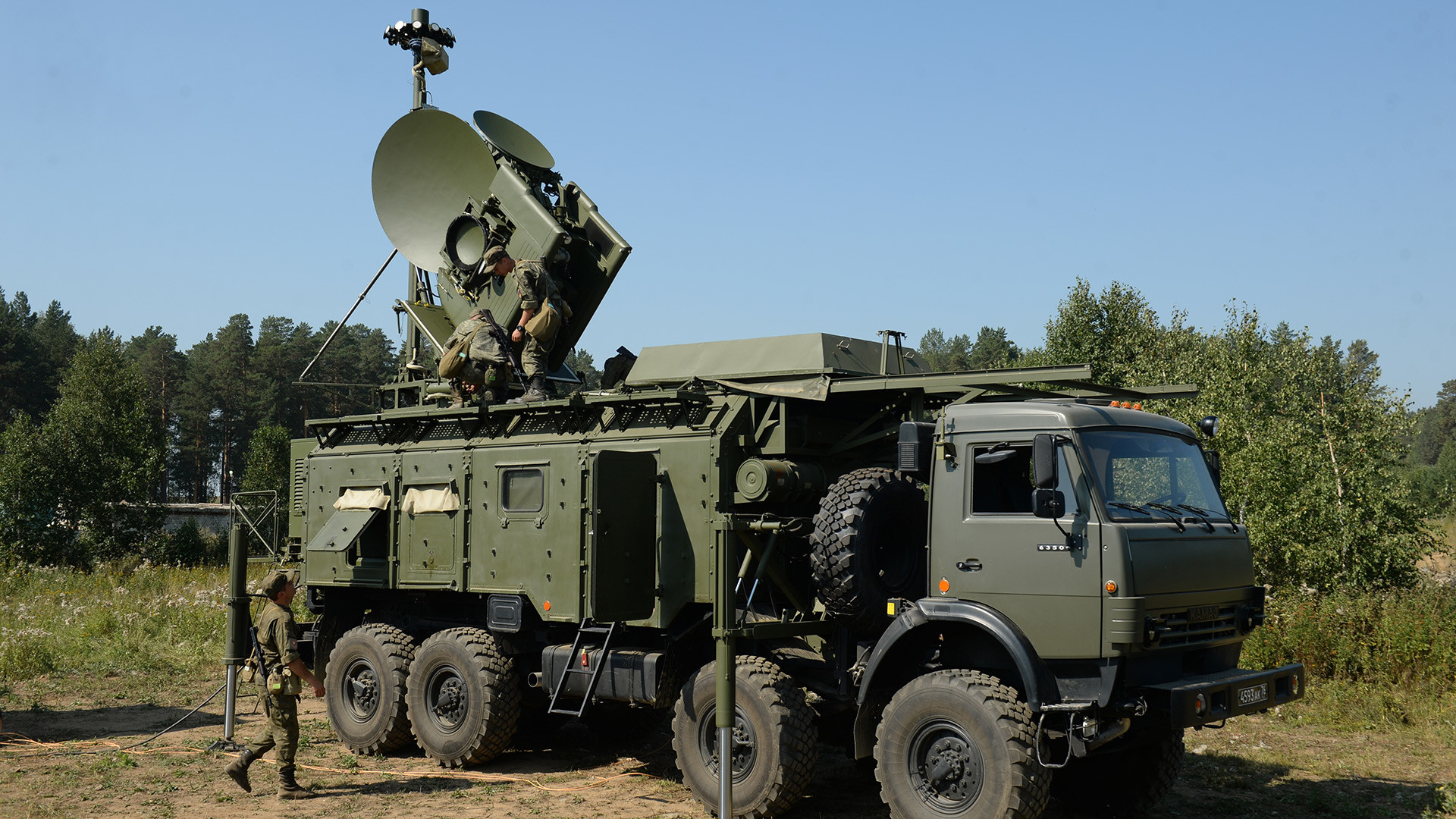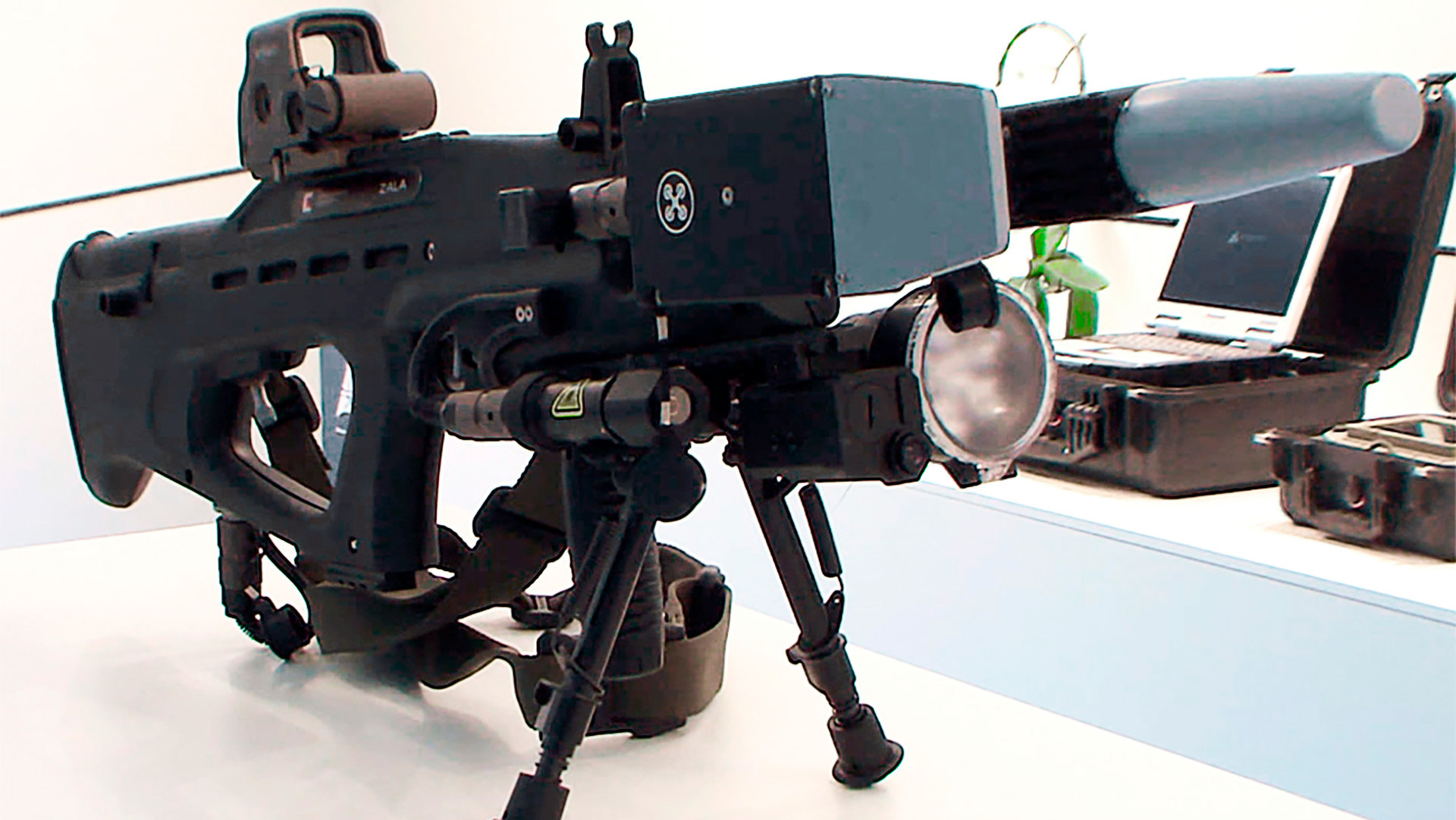Drone warfare: How Russia’s military takes out unmanned flying machines

Pantsir-S1 is a Russian made short to medium range anti-aircraft system.
Vitaly V. Kuzmin/www.vitalykuzmin.netMilitants launched a drone attack against Syria’s
It appears the terrorists either decided to try their luck against the base’s advanced and costly air defense
‘Silent’ war machines

Krasukha-4 is a radio-electronic vehicle capable of "turning off" computer systems even of the most advanced military equpiment.
Pavel Lisitsyn/SputnikAccording to the Russian Defence Ministry, six drones were captured “alive” by radio electronic vehicles guarding the Khmeimim Air Base.
These machines literally cover a military structure with an electronic shield invisible to the human eye, which eliminates enemy signals, aiming systems, and wiretapping capabilities.
One of these systems is called Krasukha-4. It targets enemy locator systems by throwing an electronic veil over them and has a range of up to 250 km. This very weapon blinded several militants drones on Jan. 5.
Devastating defense

Pantsir-S1 is a Russian made short to medium range anti-aircraft system.
Vitaly V. Kuzmin/www.vitalykuzmin.netAt the same time, three drones were shot down by Russia’s hi-tech medium range, surface-to-air Pantsir-S1 air
The Pantsir-S1 shoots up to 5000 rounds per minute, but it’s barrels need to be changed every 8000 rounds - so the upkeep isn’t cheap.
What’s the alternative?

REX-1 is one of the Russia's first electromagnet rifles capable of fighting drones armadas.
RTIt’s not only Russia’s armed forces who are considering a cheaper alternative to combating drones - the U.S., France, Germany, China, and India, to name but a few countries, are working on ways to target unmanned aircraft without forking out millions of dollars each time.
Last year Russia’s military received two new weapons designed specifically for drones: REX-1 and Stupor electromagnet guns for spec ops and infantry units.
According to the head of the special projects department at the Zala Aero Group Nikita Khamitov, REX-1 suppresses drones’ command and control channels. It's also fitted with a number of interchangeable electromagnetic and infrared units that suppress GSM, GPS, GLONASS, Galileo (the last three are various types of satellite navigation systems), and other channels.
After being targeted by one of these advanced guns, a drone will either land on the spot or return to where it took off.
"In the former case the drone will disappear from enemy radars and you effectively have a new toy in your hands," Khamitov said.
As you've already learned about Russian new electromagnet weapons, you'll definitely want to read about the country's most powerful sniper rifle that can eliminate targets 4 km away.
If using any of Russia Beyond's content, partly or in full, always provide an active hyperlink to the original material.
Subscribe
to our newsletter!
Get the week's best stories straight to your inbox